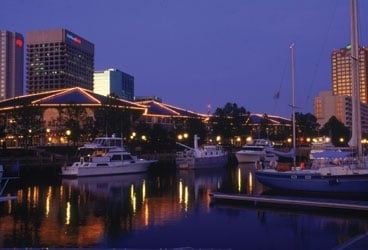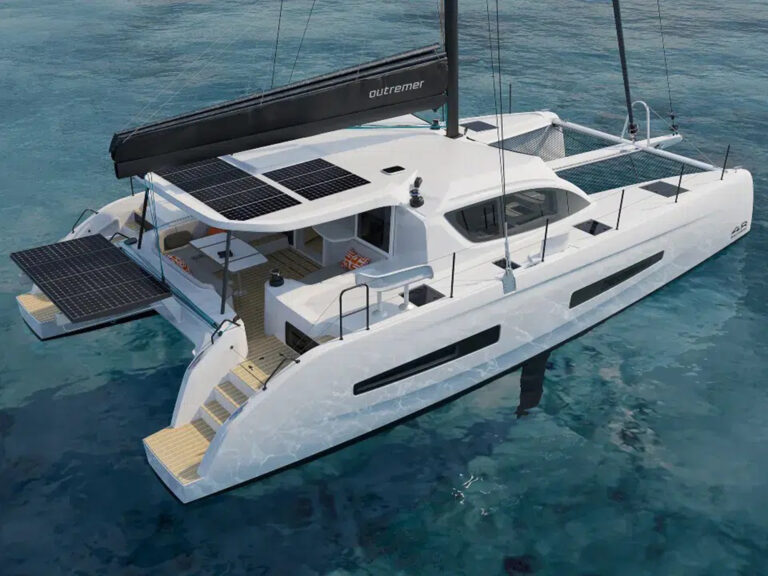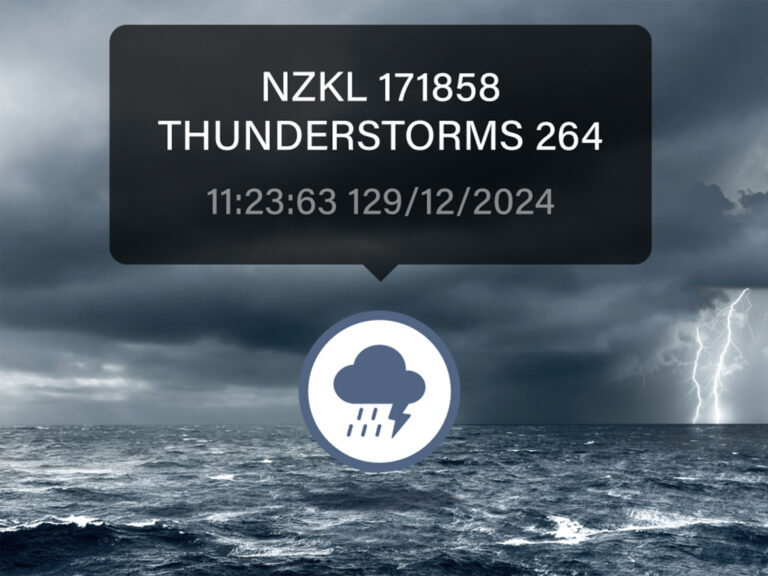
loop 368
One minute, Bill Holzworth is poking around the Internet, trying to figure out how to do an extended cruise aboard Sarayu, the Hunter 27 sloop he keeps on Kentucky Lake, the largest manmade reservoir in the eastern United States.
The next thing he knows, the Bonne Terre, Missouri, resident is sitting in an air-conditioned conference room while soaking up details of “Preparing to Do the Loop,” a seminar presented by veteran powerboaters Alan and Susann Syme as part of a three-day lineup of meetings, lectures, group meals, and socials called “Looper crawls” put on by the America’s Great Loop Cruisers’ Association. Holzworth was attending the group’s spring rendezvous in April 2010.
At least, that’s what it felt like to Holzworth, who, with his wife, Joy, plans to head south from their lake to the Tenn-Tom Waterway, Mobile, Alabama, and other counterclockwise points on the more than 6,200-mile route connecting inland lakes, rivers, and waterways through the eastern portion of the North American continent.
“We’re not rich or flush with money,” Bill says, “so we’ll buy the needed electronics, safety gear, and charts as our paychecks allow. Right now, our plans are to leave during the fall of 2011 and take a year or more to complete the trip. The rendezvous was our first, but we’re hoping it’s not our last.”
The networking and instructional value of the event-one of two scheduled annually-wasn’t lost on Holzworth and others. Held at a resort and marina fronting the Intracoastal Waterway in North Myrtle Beach, South Carolina, the rendezvous made it easy for a couple of hundred Loop veterans, those en route, and those who aspire to the trip to gather and get the latest on Great Loop logistics.
“Most attendees are getting information about what to do and how to do it,” says Syme. “The Great Loop is a huge adventure. It challenges you logistically, technically, and physically. It’s almost daunting.”
From fuel costs to lock operating hours, the inland circumnavigation can demand a cramming marathon akin to a graduate-school-level exam. As one Looper at the seminar’s opening dinner put it, “Our learning curve was straight up!”
The Symes and other vets can easily identify with that experience, so they pass on the nitty-gritty details with aplomb. Alan digs into the nuts and bolts while Susann espouses a philosophical style.
“It’s all about firsts,” Susann says. “The first time you have to dock or put yourself in a slip. Once you’ve done more of it, you feel better. Know your boat and systems. Educate yourself in any way you can. Some Loopers are obsessive about the details. Others say, ‘Let’s cut the lines and go!'”
Susann and Alan finish each other’s observations often enough that it is obvious that this is advice they share as a couple: “If you haven’t done this type of thing, charter and try it out. Don’t sell your house. Decide on a route. Think about the time you have available. Consider the boat’s air draft, speed, and range. If time is an issue, shorten the route. Do all the Great Lakes, for example. Think about the open-water passages, particularly if it’s your first one. Stay flexible. Watch the weather, consider the cold, and pick a season. Pay attention to your insurance policies. There’s no right or wrong way to do this. You can do it fast or slow. The slower you go, the more you’ll see. A lot of people do it in one year. Set milestones: Get to Chicago by, say, mid October. Know your deadlines. Keep both paper and e-charts.”
While Loopers by and large are highly individualistic, as the rendezvous shows, they enjoy gathering in convoys and keeping in touch. Demographically, they tend to be a husband-and-wife team between the ages of 56 to 65 who are retired or semi-retired. Income levels are comfortable, ranging from $100,000 to $300,000 annually. And, with notable exceptions, their vessels are power.
No matter if you do it under sail or power, if you’re fully retired or semi-retired, if you’re a baby boomer or a senior citizen, the Great Loop yields everything it’s billed to deliver. Debbie Starnes and her husband, Jim Emshoff, are gradually phasing out their careers in Atlanta, Georgia, so they can cruise the route aboard Fore Play, their 30-foot Carver. They’ve had their boat for nearly a decade, joined the A.G.L.C.A. a few years ago, and are eager to strike out beyond the confines of lake cruising. “There’s only so far you can go on a lake,” Debbie says. “This is a whole different universe, and we’re exploring new territory.”
CW deputy editor Elaine Lembo came back from the seminar with all sorts of Looper stories.
**Spotted on the Great Loop
**
From a 68-foot motor yacht to a 16-foot aluminum fishing skiff, all types of boats cruise America’s Great Loop, including these models:
Albin
American Tug 34
Bertram
Carver
Catalina
Cruisers
Defever
Jefferson
Kadey Krogen
Mikelson
Nordic Tug
Ocean Alexander
Pacific Seacraft
Sea Ray Sundancer
Silverton
Tanzer







